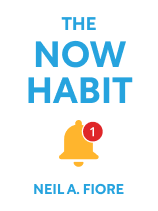

This article is an excerpt from the Shortform book guide to "The Now Habit" by Neil A. Fiore. Shortform has the world's best summaries and analyses of books you should be reading.
Like this article? Sign up for a free trial here.
Why do we avoid the things that matter most to us, even when we know that doing so makes us unhappy in the long run? What can you do to overcome procrastination?
Sometimes, task avoidance and procrastination result from being overwhelmed with the work itself—especially when tackling a large or complex project. If that’s the case, try breaking down the project into manageable parts to avoid procrastination-spawning emotions like fear and anxiety.
Here’s how “chunking” or breaking down projects can help break the habit of procrastination.
Avoid Overwhelm by Breaking Down Projects
Sometimes, task avoidance and procrastination are caused by the perceived enormity or complexity of the task in front of us. We’re not sure what to do, and we doubt our ability to complete the work. Other times, we underestimate how much work will be needed or how long it’ll take. To help avoid these problems, Fiore recommends breaking down large projects into smaller steps.
For example, say you want to buy Christmas presents for your friends and family. If you just add “buy Christmas presents” to your to-do list, you might find yourself avoiding the task—it sounds like a lot of work, and you’re not immediately sure what needs to be done. Plus, it’s only October, so you have plenty of time. This is a recipe for procrastination: The task itself is complex but ill-defined, which encourages you to put it off until you start panicking about the deadline and beating yourself up for not starting sooner—neither of which will help your shopping (or your holiday spirit).
(Shortform note: Productivity expert David Allen develops this idea further by distinguishing between tasks and projects. In Getting Things Done, Allen defines a project as anything that requires more than one step to complete and argues that you can’t actually work on a project—only its component tasks. In other words, if you aren’t careful to distinguish between projects and tasks, you might end up procrastinating simply because you’re erroneously trying to “do” a project (like “buy Christmas presents”) rather than a task.)
Fiore says you can avoid these problems by breaking down “buy Christmas presents” into its component tasks. These tasks might include making a list of everyone you want to give presents to, brainstorming present ideas for each recipient, and so on. Next, Fiore recommends that you set deadlines for each step in the process. For example, if you’re mailing presents, you’ll need to know the last date to ship with guaranteed delivery by Christmas.
| How to Chunk a Project Productivity writer Charlie Gilkey cautions that it’s possible to break a project down to the point where you lose the overall shape of the project amid a long list of tasks. To avoid this problem, he recommends breaking projects into “chunks”—major steps that represent roughly two hours of focused work. For example: – “Hire a new software developer” is a project. – “Interview candidates” is a chunk of that project.“ – Email Sheila to schedule an interview” is a task that falls under the “interview candidates” chunk. Gilkey’s point is that chunks are discrete and specific enough that you know what to do next, but they’re still large enough that you can see how they fit into the project as a whole, whereas a long list of specific tasks like “email A,” “email B,” and so on might just become overwhelming and distracting. |
Breaking down projects in this way has two benefits. First, it gives you a more realistic sense of your timeline. You avoid unpleasant surprises and undue stress by figuring out ahead of time how long things will probably take. Second, you create a manageable action plan, which in turn makes it easier to actually do the work. Instead of trying to nebulously “buy Christmas presents,” it’s much easier to motivate yourself to take half an hour to pick out a new sweater for Uncle Bob.
| How to Set Attainable Goals by Breaking Things Down Fiore mentions that this approach can be also used to set goals, but he gives only a brief explanation of how to do so. Luckily, many other writers offer detailed suggestions for goal-setting. One popular approach is what Charles Duhigg calls SMART goals. Like Fiore’s approach to projects, a SMART goal works by breaking down a big idea into a set of actionable information. Specifically, in Smarter, Faster, Better, Duhigg defines SMART goals as: – Specific: Be clear about what you hope to accomplish and how you intend to do it. – Measurable: Determine how you’ll know when (and to what extent) the goal is complete. – Achievable and Realistic: Make sure it’s actually possible to complete the goal given your knowledge, ability, and resources. – Timely: Set a specific deadline or time frame for your goal so that you can plan accordingly. |

———End of Preview———
Like what you just read? Read the rest of the world's best book summary and analysis of Neil A. Fiore's "The Now Habit" at Shortform.
Here's what you'll find in our full The Now Habit summary:
- Why people tend to put off the things that matter the most
- Where procrastination stems from, and why it doesn't mean you're lazy
- How to get more done while still maintaining a balanced life






